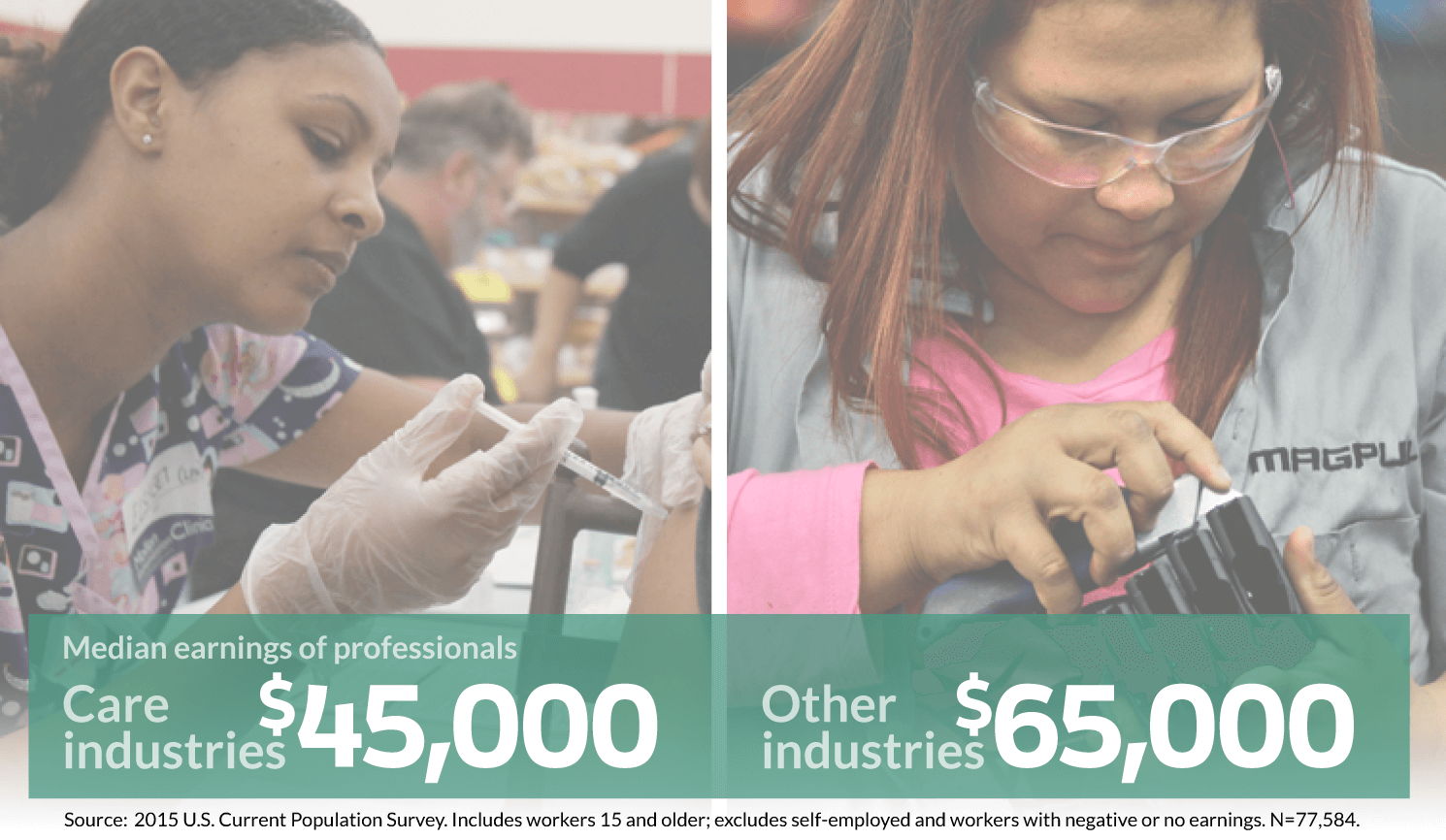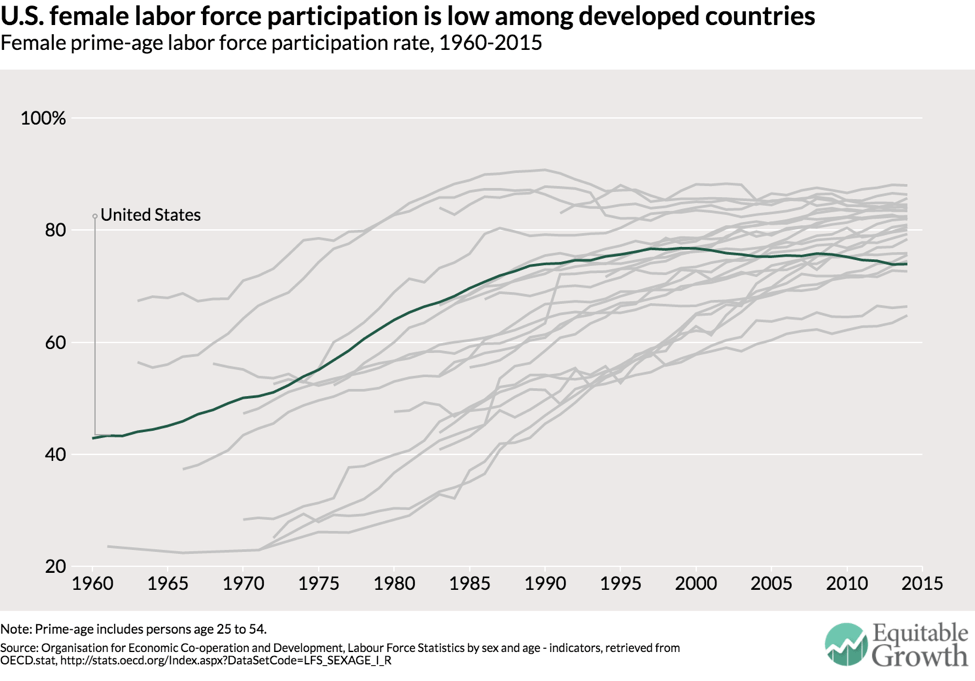
Many workers in care industries, such as health, education, and social services, are motivated by a genuine concern for those they tend to, creating what social scientists refer to as large “social externalities, ” increasing the capabilities of the workers, citizens, and consumers they care for in ways that evade easy measurement. Team work is another important feature of the provision of care. Doctors, nurses, and other medical personnel collaborate with patients and their families to improve health in the same way that school administrators, teachers, and teachers’ aides work with students and their families to improve learning.
New Working Paper
The wages of care: Bargaining power, earnings and inequality
All these factors make it hard to identify the contribution that an individual care worker makes to total output, which limits these workers’ ability to bargain for a wage that accurately reflects their true value added to the broader economy. In most workplaces—as in most team sports—complex synergies such as team spirit come into play. But some jobs are like baseball, where individual performance and contribution to team wins can be measured fairly easily, while others are more like football, where it is especially difficult to estimate the contribution of those who play defense.
Workers in care occupations tend to earn less than similar workers elsewhere in the U.S. economy. This finding, reported in a paper I coauthored in 2002 entitled “The Wages of Virtue,” is confirmed in an updated version presented by sociologists Michelle Budig of the University of Massachusetts-Amherst, Melissa Hodges of Villanova University, and Paula England of New York University at the Work-Family Research Network Meetings last June in Washington, DC. The “care penalty” represents the inverse of a “pay premium” that has been observed among workers in the financial sector, who earn wages higher than would be predicted from their individual characteristics.
The interdependence that results from “teaminess” has particularly specific implications for the distribution of earnings in care industries, which employ about 25 percent of all workers in the United States. Because health and education are widely considered public goods, both government and non-profit organizations play a particularly important part in their provision. Unfortunately, most previous analyses of earnings inequality in the United States focus on dynamics in the private sector alone.
In our new working paper, University of New Hampshire sociologist Kristin Smith and I present data from the 2015 U.S. Current Population Survey showing that the distribution of earnings in care industries is more compressed than in other industries. The ratio of earnings at the top 90th percentile to the 50th percentile is lower, as is the ratio of the 50th to the 10th lower percentile. Although women are disproportionately represented in care industries, this pattern holds for men as well.
Our multivariate analysis—controlling for gender, type of employment (public, private non-profit, and private for-profit) and years of education—shows that managers and professionals pay a particularly significant penalty for working in either a care industry or a care occupation. The resulting reduction in earnings in the top half of the earnings distribution, where managers and professionals are disproportionately located, has an equalizing effect. Many factors could contribute to this outcome, including the particular distribution of skill requirements in health and education.
Yet the rarity of significant performance-based pay incentives in care industries suggests that teamwork also plays a role. It seems telling that both top and average salaries in 2014-15 were lower in the National Football League than in Major League Baseball, as were the ratios of top-to-minimum salaries. Keep in mind, however, that the average salary in the NFL in that year was $2 million, despite team revenue sharing rules and regulated bidding. Care workers are in a very different league when it comes to average pay.
—Nancy Folbre is economics professor emerita at the University of Massachusetts Amherst


 It seems a lot of twenty-somethings in the United States who are trying to make it in the big city have a secret weapon: Mom and Dad. A new
It seems a lot of twenty-somethings in the United States who are trying to make it in the big city have a secret weapon: Mom and Dad. A new 